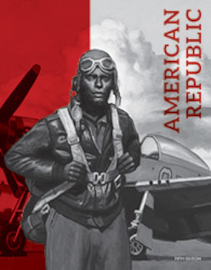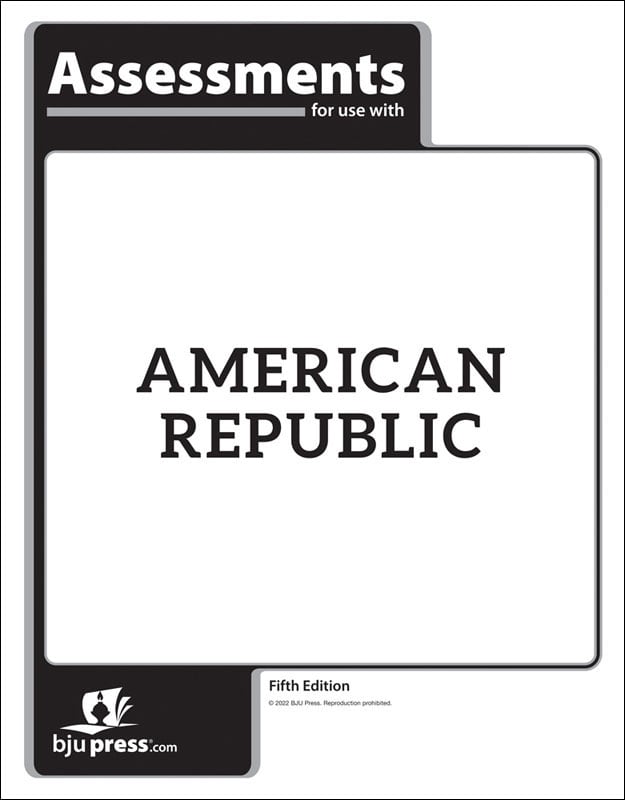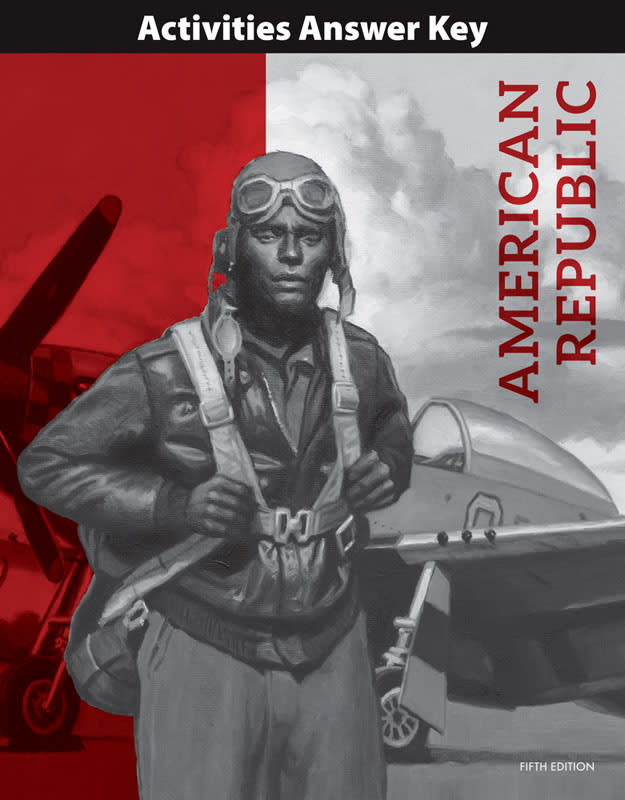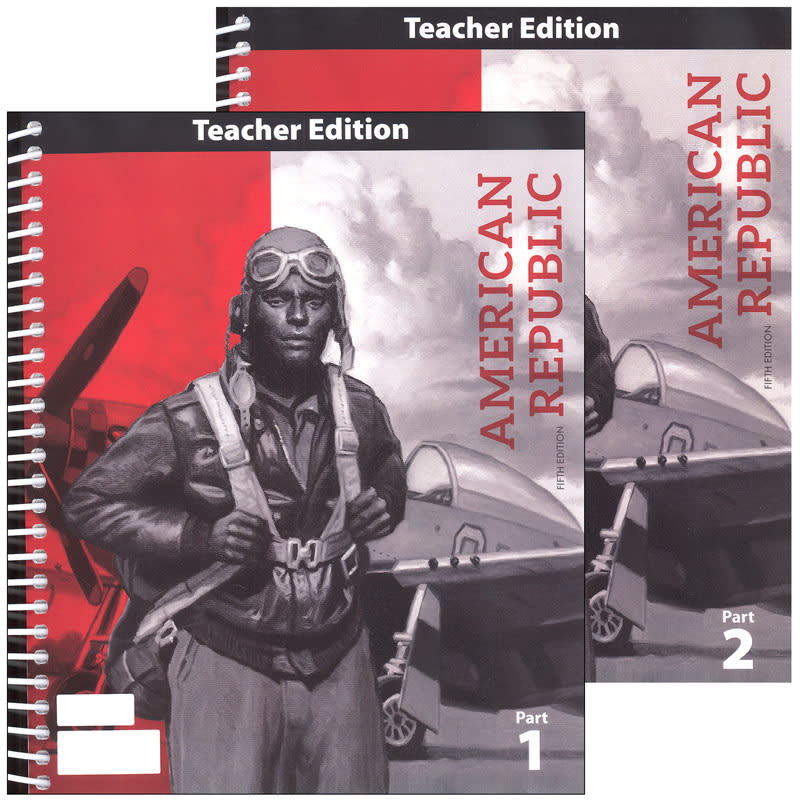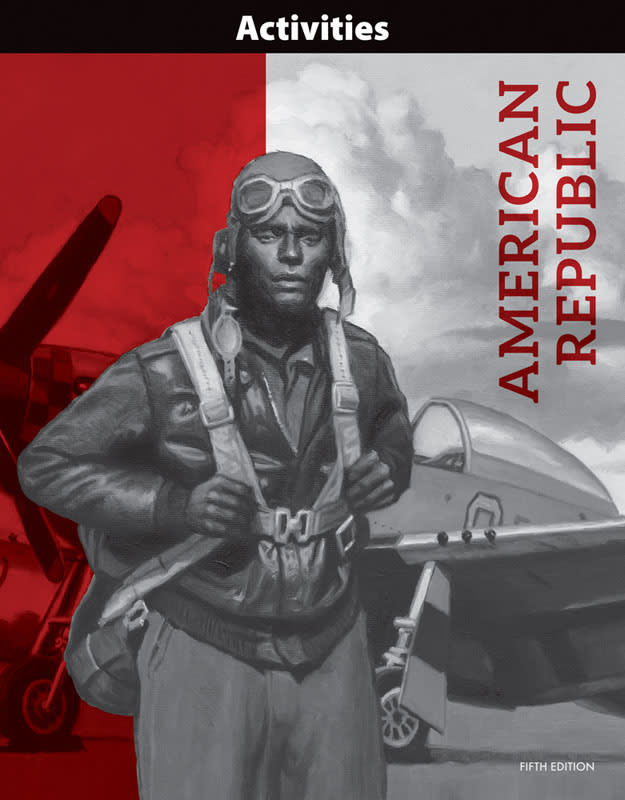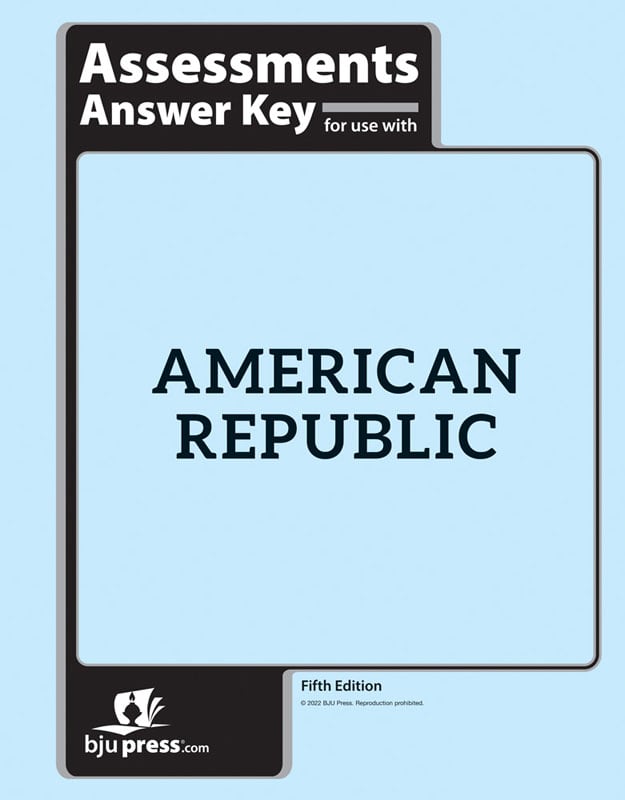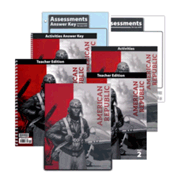Written for eighth-grade students, the fifth edition of The American Republic is an introduction to United States history that begins with early American civilizations and explorations of the Americas, then narrows its focus to the United States, continuing up into 2021.
This textbook clearly presents a politically conservative, Protestant point of view. Instruction in a biblical worldview is embedded throughout the course, centering on six themes: freedom, individualism, equality, growth, justice, and religion. The introduction to the course explains how these themes will be approached. For example, the worldview application for the concept of growth centers around the fact that "God created a world in which people develop cultures and civilizations. In a fallen world, growth often involves injustices" ( p. xx).
This is a very substantive textbook of more than 650 pages. It has an even higher page count than the previous edition, probably because of the addition of improved and larger illustrations, graphics, and maps. Many parents and teachers will appreciate its depth and breadth of coverage, which rivals some high-school textbooks. Even though BJU Press designates it for eighth grade, it should also be usable as a ninth-grade course.
The course is arranged into two parts, containing a total of seven units, with three to five chapters per unit. Each chapter starts with a set of "Guiding Questions" to help focus students' attention on what is most important. Each chapter is broken down further into several sections. The sections begin with an "Essential Question" that, again, focuses students' attention in a way that might pique their interest. A set of "Section Review" questions concludes each chapter section, generally with at least four or five comprehension questions to ensure that students read and retain the material and at least one critical-thinking question, identified by a gray box around its number. For example, a critical-thinking question on page 48 asks: "What are some benefits and drawbacks of multiple nationalities and ethnic groups with diverse religions living in the same area?"
The helpful Chapter Reviews at the end of every chapter include a list of terms to know plus questions presented in three sections. "Making Connections" includes comprehension questions along with others that ask how, what, and why. "Thinking Critically" questions go beyond the surface, but students can answer them by making use of the material covered in the chapter. And "Living as A Christian Citizen" questions are open to personal responses since they pose quandaries, such as, "Should Christians desire a society in which all people are socially equal? Defend your answer" (page 85).
The American Republic subject kit includes the student textbook, the Student Activities book, the teacher's editions for both books, tests, and the answer keys for the tests. The textbook and Student Activities book are also available as proprietary eTextbooks.
For the Teacher
The two-volume teacher's edition includes valuable background information that will significantly enhance lessons if you have time to use it. It includes complete lesson plans and slightly reduced, full-color reproductions of student pages with answers printed in the areas surrounding student pages. Answers include the page number(s) in the textbook where each topic was originally covered. In those border areas, you will also find teaching suggestions, discussion questions, activities and projects (some requiring a group of students), and instructions for when to use pages in The American Republic: Student Activities book.
Homeschooling parents should sign up for free access to the Homeschool Hub™ where they will find website links, digital instructional aids, simplified lesson plans, a scheduler, and a gradebook.
Student Activities
The American Republic Student Activities book is an essential component of the course. This is where you will find many primary source documents students are to read and analyze. While it includes some fill-in-the-blanks questions and matching activities, it also has students write sentence- and paragraph-long responses, complete graphs and charts, do map work, and write a historical essay. Parents or teachers need the answer key for the Student Activities book.
Summary
Families who share the religious and political views of the textbook authors should find this an excellent course for covering U.S. history.




